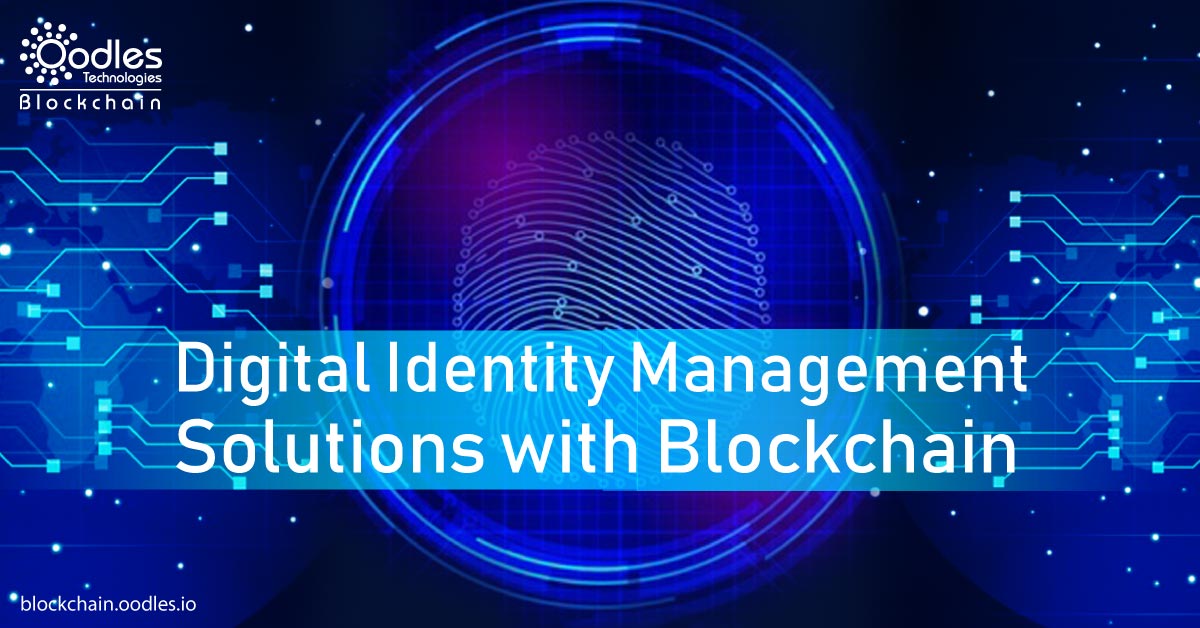-
Blockchain based identity management puts individuals back in control of their identities
Today, the internet fails to provide a sufficient identity protocol for distinguishing people and institutions.
Consequently, there was a need for service providers to build and maintain their databases of user information. It's a costly solution for them, as well as the information gets duplicated across different providers. Also, it gets difficult to secure it, given the recent large-scale personal data hacks globally. And, it becomes tedious for users who need to recall numerous credentials for different services.
Moreover, personal information could be processed for profiling, data mining, and exploitation without users' consent.
An Overview of Identity Management
Identity management simplifies the user provisioning process. It enables new users to get access to online services, as well as de-provisions users to ensure that only authentic users get access to services and data.
1) Independent IDM
Most of the identities available on the internet follow the centralized model of storage and verification. A single entity owns and manages users' credentials.
However, these independent identity repository models are full of deficiencies. Users won't even get to know whether their identity record has been revoked or misused by the identity provider.
2) Federated IDM
Federated identity management systems can give authorization and authentication capabilities encompassing organizational and system divisions.
This system needs contractual agreements on data ownership. An agreement stating that individual identities at one provider have been recognized by other providers.
This approach, however, is relatively quite complex. The implementation requires proper agreement and a trust relationship between online services.
3) Self-sovereign IDM
A self-sovereign identity system enables users to control their own digital identity. People and businesses get the power to store their identity data on devices of their choice. Since it is free from any individual silo, it gives users full control, security, and full portability of their data.
From a Service Provider's Standpoint
It is becoming inevitably complicated to manage and authenticate users as passwords and personal identity information gets traditionally stored in a centralized server. It opens gates for hackers to achieve their malicious goals by stealing, misusing, or manipulating these data.
Hence, service providers need to have stronger mechanisms, by incorporating multiple factors authentication for access and robust encryption, which may in the future complicate the system.
Thus, new authentication and identity management framework are needed to be employed.
Blockchain-Based Identity Management Solutions
Here's a summary of state-of-the-art blockchain-based identity management solutions.
Whether it's the Internet of Things (IoT), social networking, industrial Internet, or payment gateway system, authentication is one of the key components of any trustworthy online system, which needs to handle sensitive data or transactions.
The process of authentication must be transparently visible to users.
A typical authentication method should be reliable, efficient, and adequate for verifying data credentials while protecting users' privacy.
The current identification ecosystem is complex and full of middlemen. Also, service providers are investing billions in systems and infrastructure to make them compliant with data security regulations.
However, as of today, the challenges still persist in managing a user's identity, authentication, and authorization.
In the year 2018, there was a massive data leak in Malaysia involving 46.2 million mobile users.
And in 2019, over 220,000 organ donors' personal details were leaked through government official databases in Malaysia. Wrong hands may have reached critical information like their personal details, identity card numbers, addresses, and mobile phone numbers.
Data vulnerabilities have caused users to deal with identity theft and breaches. The bottom line is server-centric identity management model has deficiencies.
Also Read: IOTA's Tangle Is Empowering Palm Scanning Identity Verification Technology
Blockchain Technology in Digital Identity Management
We all know about Bitcoin, Ether, and numerous other Cryptocurrencies. These cryptos enable people to anonymously execute reliable and safe digital payments and transactions. The underlying mechanism of these cryptocurrencies is blockchain technology; a decentralized database. It can record all transactions since their beginning.
Contrary to a central network such as a bank or government, the entire network continuously verifies the integrity of those transactions. Subsequently, users don't need to rely on a central entity. The guarantee of security gets determined by the strength and computing potential of the entire network participating in the blockchain.
Being an immutable distributed ledger, Blockchain verifies and ensures that the users, transactions, and messages are valid. The authentication process gets conducted using smart contracts. A smart contract gets written and deployed to the blockchain. It self-governs itself within a set scope of actions, along with removing the need for a third party for validation.
Is Blockchain the Answer?
The ideal fix could be a ‘blockchain-based self-sovereign identity.' A new form of blockchain-based identity management, owned and controlled entirely by each individual user in the decentralized network.
Such a solution would have an individual's consolidated digital identity information as well as their verified attributes, which will get cryptographically signed by numerous trusted issuers.
In a nutshell, this new mechanism would disrupt the current identity management and authentication solutions by laying the foundation for a more promising and secure platform.
Blockchain-based self-sovereign identity management and a decentralized solution developed using Distributed Ledger Technology (DLT) could help address these challenges.
Undeniably, the blockchain and DLT is an ingenious inventions.
Still, blockchain technology remains one of the most underestimated technologies of the time.
It was just the surface we've scratched. So, we thought of preparing another article for blockchain based digital management. The next analysis talks about the radical changes to come after blockchain's entry in the digital identity management landscape. It highlights some of the prominent use cases and applications of blockchain that can revolutionize the way we share, use and protect our identities, not only over the web but also in the real world.
A few essential reads
Hybrid Blockchain: Bringing the Best of Both Public and Private Blockchains

Our Offices
INDIA
Emaar Digital Greens, Sector 61,
Gurugram, Haryana
122011.
Welldone Tech Park,
Sector 48, Sohna road,
Gurugram, Haryana
122018.














